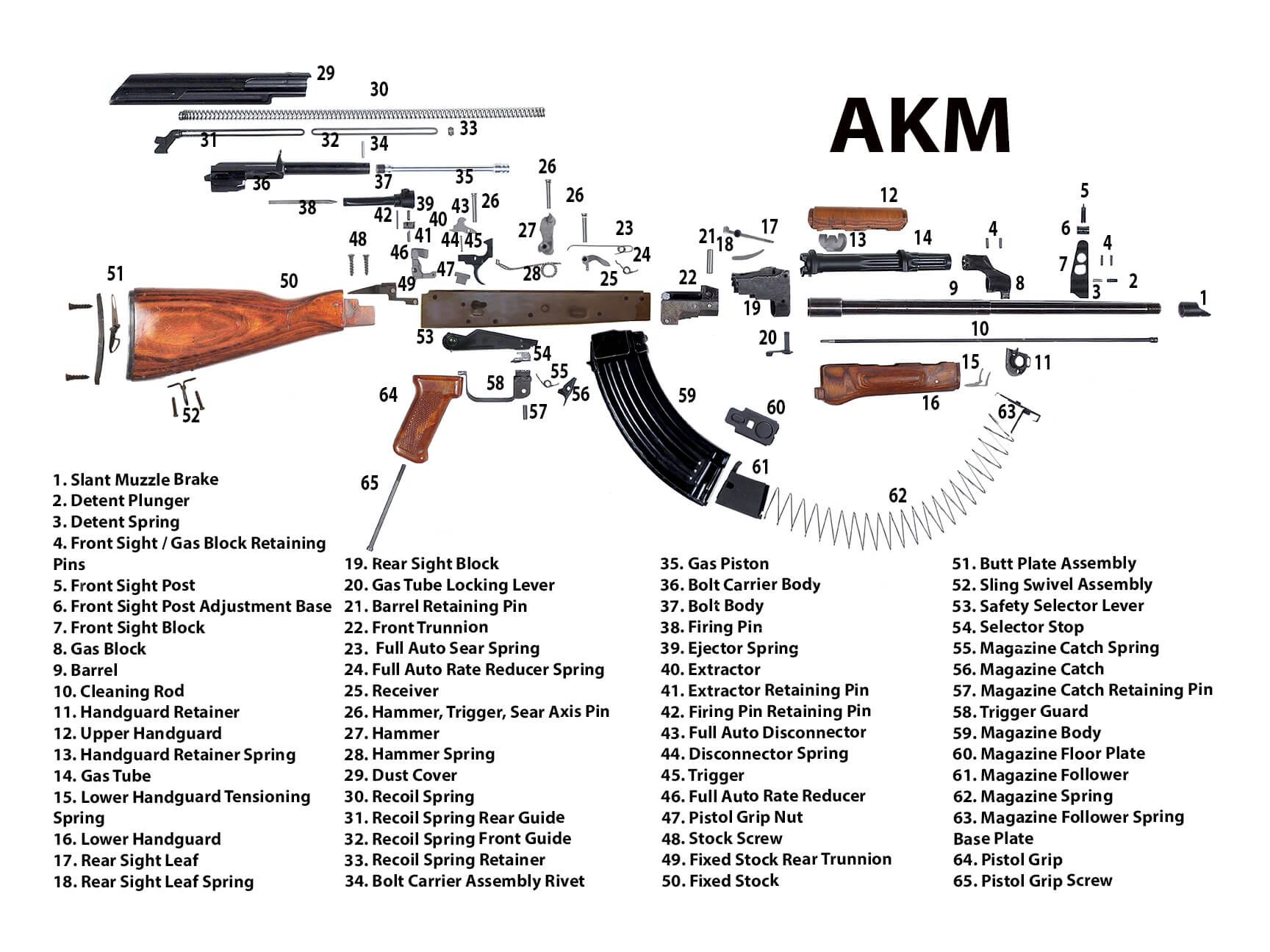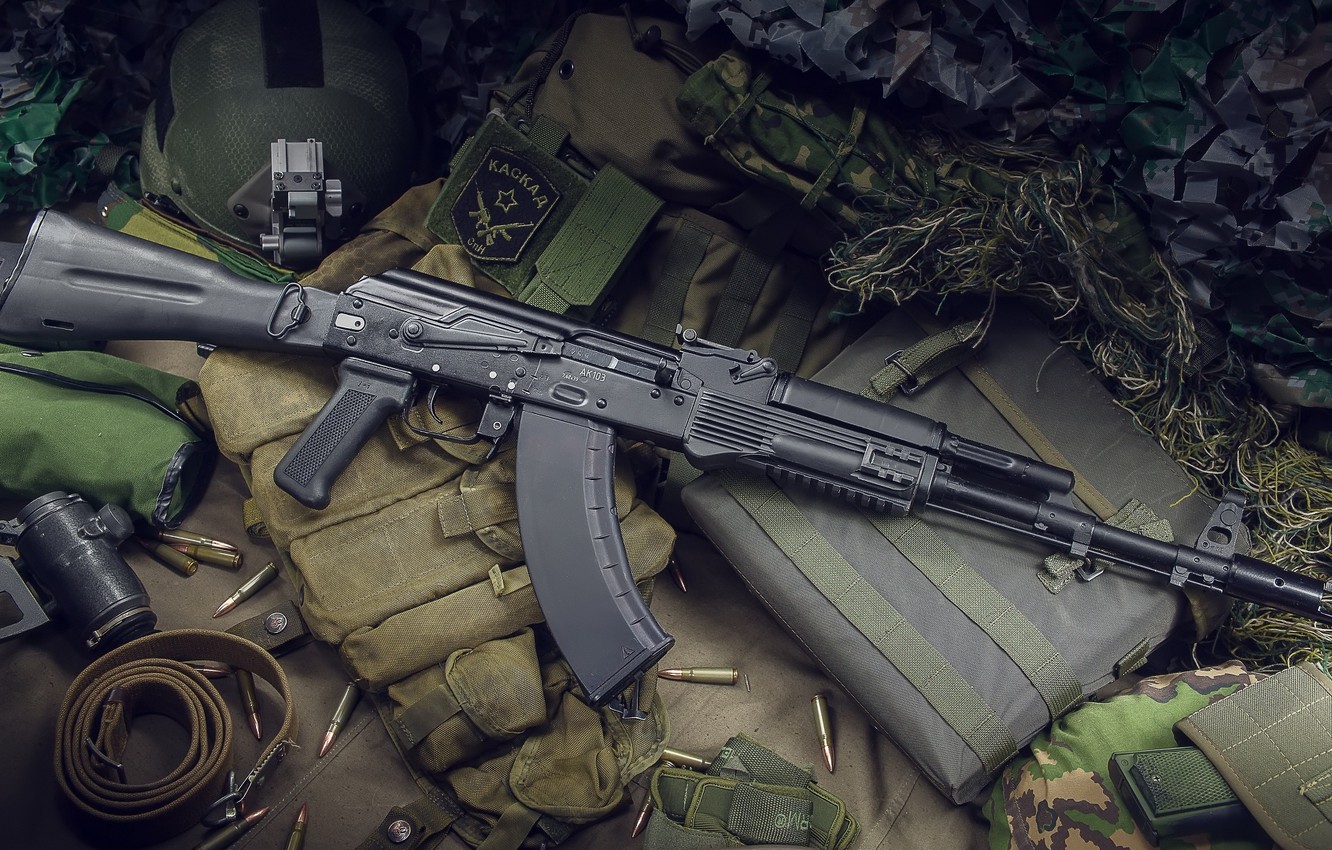Assault rifle constructed by Mikhail Kalashnikov is a weapon so widespread that it can be easily assumed that it has participated in every armed conflict since its inception. AK (rus. aвтомат Калашников) has served armed forces around the world for over 70 years (the first version was adopted by Soviets in 1949) and well over 100 million copies of this design were produced in a great number of varieties. The most widely spread is the modernized AKM variant.

Carbine
It is the second firearm produced in significant quantities after German Stg. 43/44, firing so-called intermediate cartridge, which closes the gap between pistol ammunition and a full-size rifle cartridge. (It should be noted that apart from the general appearance, there are no similarities between them.) This type of weapon is called an assault rifle or an automatic carbine, unlike battle rifles or automatic rifles firing full-size cartridges, e.g. 7.62 x 51 mm (FN FAL, M14) or 8.6 x 63 mm/.30-06 Springfield (M1 Garand). A vast majority of standard issue small arms around the world is fed by this general type of ammo and falls into assault rifle category. This is due to the much better ratio of weight, bullet dimensions and low recoil – to the range and energy of the projectile. A soldier can carry more ammunition for his weapon, hit a human-sized target fairly easily up to about 500 meters (using optical sights), and at close range – if necessary, use rapid or automatic fire without significant impairment of accuracy due to recoil.
Misnomer
Before we start talking about technicalities, it should be noted that the name AK-47, often used for the Kalashnikov carbine, is incorrect and applies only to one of the prototype series (AK-46, AK-47 and AK-48), which saw soldier’s hands only during field trials . The first Kalashnikovs produced for the Soviet army have already received simplified AK and AKS designation depending on the stock configuration.

Inner workings
Getting back to the point – the AK is an assault rifle powered by an intermediate cartridge – originally 7.62 x 39 mm (AK, AKM, AK-103, Valmet M62), but in different versions also 5.45 x 39 mm (AK-74, AK- 105, wz. 88 Tantal) and 5.56 x 45 mm (wz. 96 Beryl, Galil, AK-101). Ammunition is fed from a removable box magazine, usually with a capacity of 30 rounds. In the military versions, the AK is an automatic weapon, i.e. equipped with the functions of semi- and fully-automatic fire. This is not the case for the civilian-owned variants, which can fire only in semi-automatic mode.
Operation is based on the use of a portion of the gases generated from the burning of the propellant (gunpowder) in the casing – its task is to accelerate the projectile and push it through the barrel. The initiation of this process begins with pulling the trigger, which releases the hammer hitting the firing pin, which in turn detonates the primer – the task of the latter is to ignite gunpowder.

A small part of the gases escapes through a side hole in the upper wall of the barrel, through the gas block to the chamber in which the piston is located. The latter is connected directly to the bolt carrier, containing the bolt. Its role is to lock the cartridge chamber, where an explosion takes place giving the bullet its velocity. When the projectile leaves the barrel, and the pressure drops to a safe level, the piston pushes the slide backwards. It engages the bolt, unlocking it by turning, which is ensured by a cam milled in the bolt carrier. The whole assembly travels together, pulling the now empty cartridge case out of the chamber with the help of the extractor claw, and the ejector removes it from the rifle through the ejection port.
When the bolt with the carrier travels all the way backwards, its journey begins in the opposite direction thanks to the force of the return mechanism, i.e. the spring mounted in the rear part of the gun – tensioned during the first phase of the cycle. Returning, the bolt strips another cartridge from the magazine and inserts it into the cartridge chamber, preparing the weapon for the next shot, which (depending on the position of the safety lever/fire mode selector) occurs immediately if the trigger remains depressed or after its subsequent pull by the shooter. The whole process takes less than a blink of an eye.

It is worth mentioning that an identical mechanism (in principle) previously appeared, for example in the British Bren light machinegun or M1 Garand rifle, and later in weapons such as used, among others by the US military M249 machinegun (based on the Belgian FN Minimi), or Israeli bull-pup IWI Tavor assault rifle.
Try it at CSA
At Cracow Shooting Academy, the AK is available in its modernized AKM variant (rus. автомат Калашникова модернизированный) produced since 1956. The main difference is that the body of the weapon (i.e. receiver) is made by stamping unlike the previous milling method.

You can also try an even more modernized version of it – the AK-103, with a polymer furniture with rails for mounting accessories and a folding stock and a muzzle brake for reducing recoil. We have also equipped this model with a red dot sight that makes aiming easier.


